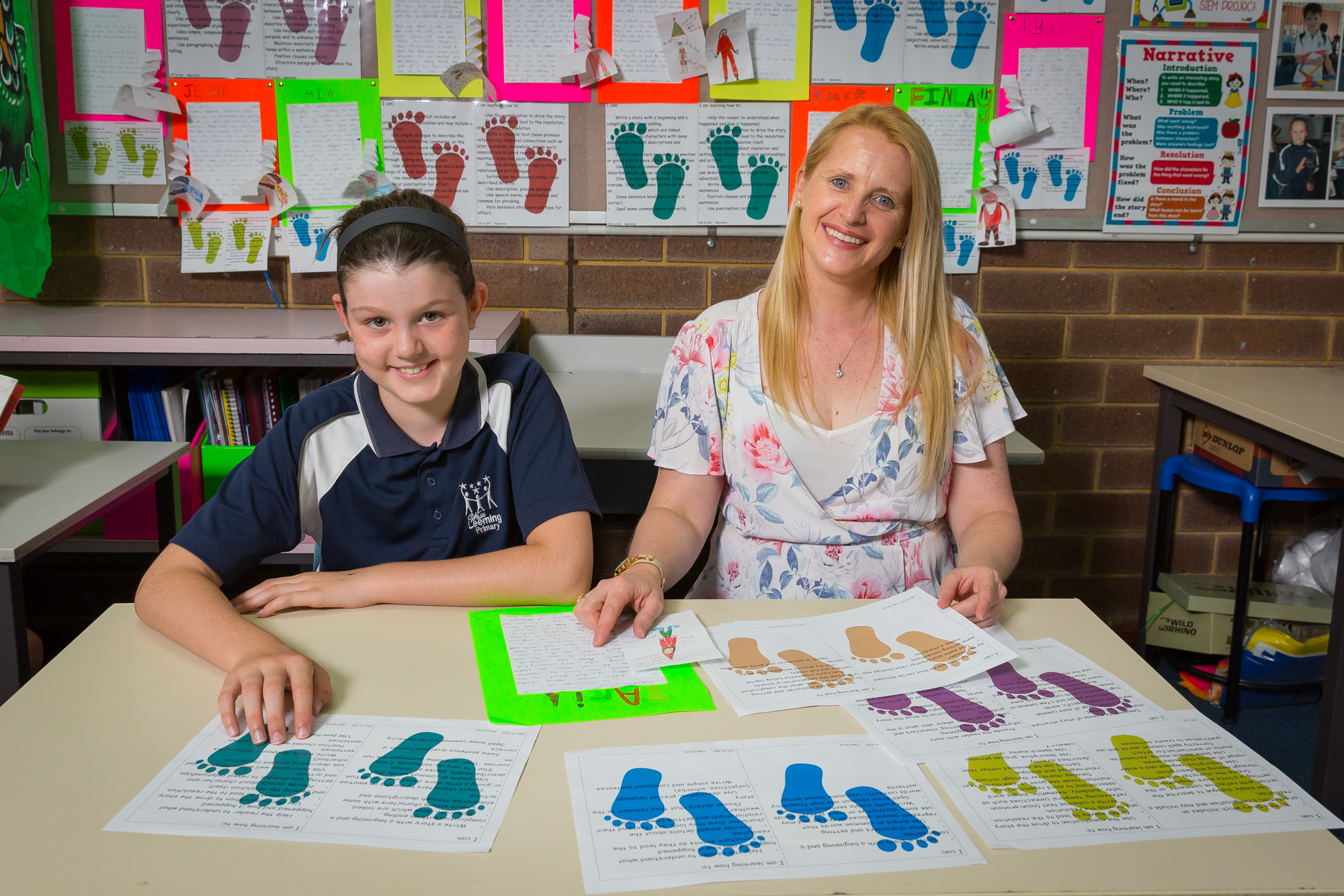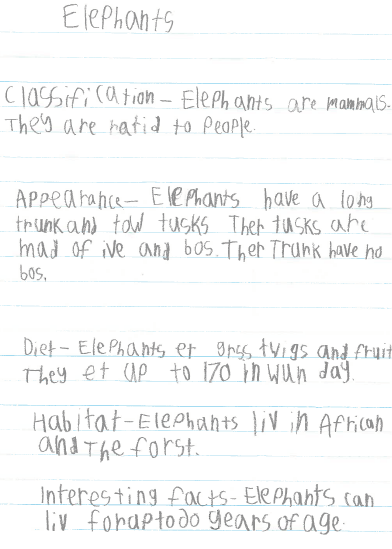The relationship between text types and paragraphing: insights from our research

As many of you know, the Brightpath writing assessments provide independently calibrated scales for narrative, persuasive and information report writing. The research we undertake to calibrate the scales provides detailed information about how writing develops, and we use this information in the Brighpath reports to help teachers use their assessment data to inform their teaching.
A colleague recently called to seek my advice about teaching students how to use paragraphs. We had a great discussion about the different requirements that come with the different text types when organising information for the reader. I looked back at the exemplars we have for the different text types and at our performance descriptors and I consulted some of the books on my shelf, such as Beverley Derewianka’s timeless book, Exploring How Texts Work.
I found it useful to think about what a paragraph is as I read and researched, and I will start this discussion with a short summary explaining paragraphs as it helps to frame my discussion about each of the text types.
Paragraphing
Paragraphs help to organise information for the reader and the overarching purpose of paragraphing is to help the reader follow the thread of thoughts in the text. Paragraphs broadly consist of a group of sentences united by a single topic or idea.
Skilled writers not only write well-structured paragraphs, but they also link paragraphs across the text. They do this either by ending a paragraph with a sentence that leads into the next paragraph or by starting a paragraph that links back to the previous paragraph.
Paragraphing plays an important role in enhancing the cohesiveness of a text.
As you will see from the discussion below, the nature and structure of paragraphs is dependent upon the genre or text type.
Narrative writing
In narrative writing, it is important that paragraphs are structured to enhance the storytelling. The way the paragraphs are constructed should help the reader follow events, but they can also be structured in a way that gives the story momentum or help to create suspense or to amuse or surprise the reader.
Paragraphs are often used to signal a shift in time or a passing of time. They are also used when a new character is introduced or when a new event occurs. A new paragraph may also be used when there is a change in the setting.Dialogue is often an important component in storytelling and paragraphs are used to separate narration from dialogue. Paragraphs are also generally used to delineate dialogue between characters.
In narrative writing, paragraphs can be as short as a single word or sentence and this is when the writer wants to emphasise a single idea or create impact.
Figure 1: Example from exemplar on Narrative scale, where the student uses paragraphing to separate narration
Her ringtone went again, a different one this time; indicating that she had an incoming call. “Mum”, the caller ID read. Bec looked at it in disbelief, had her mum called her just to hear her voice on the voicemail? She hands shook uncontrollably with anxiousness, palm sweating, as she answered the call.
“H-hello?” Bec answered, expecting her mum to be in total shock.
“Bec? I knew it. Now, I know this is a lot to take in, but you have to listen to me carefully and follow my instructions. Grab the essentials that you need into a backpack, run and meet me at the corner of Fisher Street. Whatever you do, don’t and I repeat, don’t look back. There are only a matter of minutes left before they come for you, I’ll explain everything when you get here-“, the phone call cut off.
Figure 2: Example from exemplar on Narrative scale, where the student uses a one sentence paragraph
I did not have insomnia. All those times in secluded darkness, I was asleep. I merely dreamt that I was awake. The years of suffering I endured was all in my own head.
My strings were never there.
Persuasive writing
In persuasive writing, paragraphs need to be structured to help the reader follow the writer’s line of reasoning, and thus be persuaded by the writer’s reasoning.
A persuasive text consists of an introduction, a body and a conclusion.
In the introduction the writer provides a thesis statement. This is the main idea or position that will be discussed in the text to follow. The introduction may also foreshadow the points that will made in support of the thesis statement. The body of the of the text consists of several paragraphs and each paragraph discusses a single idea that supports the thesis statement. The conclusion is used to summarise and synthesise the points discussed.
Each individual paragraph mirrors, to some degree, the structure of the overall text.
The first sentence in the paragraph, or topic sentence, introduces a single central idea and this idea links back to and supports the overarching thesis statement set-out in the introduction. The subsequent sentences within that paragraph, in turn, link back to and develop the idea set-out in the topic sentence. The paragraph ends with a concluding sentence that rounds off the discussion.
Figure 3: Example from the Persuasive scale where a student structures paragraphs to help explain their reasoning to the reader
Social Media is ruining our friendships
Social media is definitely not ruining our friendships and relationships, but rather benefiting and strengthening them. All the content and following that is built up on social media is designed to create and foster more intimate relationships with people all around the world. The following reasons are why social media is a positive and good thing for our friendships and relationships.
Firstly, social media allows people to connect and speak to friends instantly through various platforms such as: Instagram, Snapchat, Messages, Facebook, etc. By being able to do this at any hours of the day, it builds a stronger relationship or friendship due to the constant online interaction. Many friends or relationships have failed due to the lack of communication between the two, social media prevents this from happening because it is so easy and fast to get in touch with another person. Social media platforms also allow people to keep in touch and connect with another person even though they may be thousands of kilometers apart. Apps such as Skype and FaceTime allow people to see each other face to face, which gives them the impression that they are together. According to a study done by Harvard University, long distance relationships 20 years ago almost always failed due to the lack of communication.
Furthermore, social media doesn’t only benefit existing relationships, it also allows you to establish new ones. Platforms like Facebook, Instagram and Tinder connect people through similar interests and hobbies. These sites are great to find new inspiration for creative work, to find new friends that share the same passions, and relationships. Many people have found love, successful relationships and ever-lasting friendships through online dating websites and apps. Social media allows to people to be introduced and connected to other people all around the globe. These new relationships are also great for people that suffer from social anxiety to open up, as some people prefer to speak to strangers about these issues. They may also find other people that are suffering as much as them and be able to relate.
To summarise, social media is not ruining our friendships and relationships but rather building, strengthening and creating them. It allows people with similar interests and hobbies to connect and to establish a trust system. Even though there are many amazing things about social media, it is always important to put safety first and follow the basic cyber safety rules of always putting your account on private, never put any personal information online, etc.
Information Report Writing
Information report writing provides a tangible context for teaching younger students the concept of paragraphing. This is because it is often easier for students to categorise the information that they will include in their report, than in a persuasive piece of writing.
The introduction to the report comprises of an opening statement or general classification of the subject.
The body of the report sets out the facts and this information is categorised to help the reader better understand the different aspects of subject matter being discussed. The categorisation of the information determines the structure of the paragraphs and a new paragraph is provided for each new aspect covered.
Each paragraph opens with a topic sentence. This sentence captures the main idea that will be discussed in the paragraph. The subsequent sentences provide more detail about the topic sentence and may also provide an example or evidence that relates to the topic sentence.
Often subheadings are used and each subheading captures the main idea set out in the paragraph or paragraphs that follow.
Figure 4: An example of a younger student starting to use paragraphing to categorise information in report

Final thoughts
We know from NAPLAN data that paragraphing is a difficult skill. Paragraphing requires the writer to categorise their ideas, to synthesise and contrast ideas and to identify the logical connections between ideas. We can see from our exemplars that it is really only in lower secondary that students start to have a good control of paragraphing.
I am not a teacher so I cannot give advice about teaching, but I hope that our research and this discussion is helpful. I certainly enjoyed using our Brightpath research to better understand the relationship between text types and paragraphing.
References
Derewianka, B. (1990) Exploring How Texts Work, Sydney: PETA